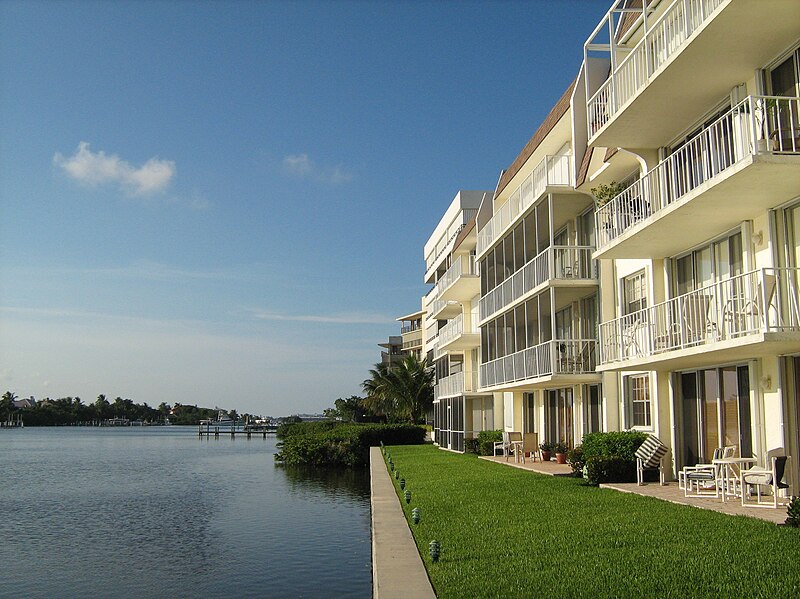
Here in South Florida, condominium ownership is extremely popular. Our local skyline is filled with condo towers, particularly on or near the oceanfront where condominium projects can offer residents beach access and beautiful waterfront views. Accordingly, there is a lot of law on the books in Florida on how condominium ownership works, and how controversies are to be resolved between individual condo owners and the condominium boards that oversee the everyday operations of the community.
What Does the Condominium Unit Owner Own?
For each buyer of a Florida condo, it’s important to understand where their individual property rights in their home begin and end, and where their ownership changes into that of a shared property right in the condominium’s “common areas” or “common elements.” The condo owner has the same rights as an owner of a single family dwelling, or suburban home, regarding decorating and repairing and maintaining his specific condo unit. Inside that unit, the owner is king.
However, the condo owner’s kingdom has jurisdictional boundaries: step across the ownership line, and the condo unit owner has a shared interest in the rest of the condominium real estate. The stairway inside the condo? The condo unit owner’s sole property interest. The stairway next to the tennis courts? The condo unit owner’s shared ownership with all his other condo unit neighbors.
How Do Condo Owners Determine Where The Property Line Is Drawn?
As a general rule, an individual condo unit is the part of the condominium where each condo owner resides or the “interior shell” (that is, the part of the condominium that is deeded to the owner or the part of condominium that the owner holds legal title to), and the common areas are everything else that is related to the condominium property (common areas are usually maintained by the association unless the declaration says otherwise). However, to be exact, each condo unit owner needs to look to Florida law and the governing documents.
1. Florida Condominium Act
First, the determination of legal rights for Florida condos is delineated in the Florida Condominium Act. Here, for example, if there is a debate between the unit owner and the condo board regarding who is responsible for a repair expense, Florida Statute 718.113 of the Florida Condominium Act will provide the answer.
2. Florida Declaration of Condominium and Bylaws of Association
Second, the actual property lines and real estate rights of the condo owner will be defined in the particular real estate documents that are specific to his condo. The definition of the condo “unit” and the “common areas” of each Florida condominium are defined in detail within the contractual documents creating the condominium itself, I.e., its Bylaws and Declaration of Condominium. These are documents which are provided to the condo owner at the closing table when he buys the unit.
When the real estate development legally becomes a condominium, either as a new project or as a transition of an existing multi-family property into a condominium, a “Declaration of Condominium” is filed in the county real property records. This is of “…paramount importance in defining the rights and obligations of unit owners.” Hidden Harbour Estates, Inc. v. Basso.
The Bylaws of a Florida Condominium involve the documents that create the organization that will oversee the operations of the condominium and create the condominium association. Each Florida condominium is operated and managed by its Condo Board.
3. Deed Restrictions
Third, there are real estate records that may also impact the property rights of the condo unit owner. Deeds to the real estate upon which the condominium sets may have restrictive covenants (deed restrictions) that impact where the line is drawn between each owner and the condominium ownership as a whole.
Why is This Important to the Condo Unit Owner?
In Florida, the Florida condo owner is free to enjoy his condominium as he wishes. He can paint all the interior walls black if he chooses, for example. However, the Florida condo owner shares the ownership of everything outside his unit with his fellow condo owners — and this can mean that the condo owner may not be able to do some things he would like to do – like paint the exterior of his condo entrance black – and he may have to do some things he’d prefer not to do – like pay his share of a special assessment in order to build a hot tub next to the swimming pool.

Do you have questions or comments? Then please feel free to Chat with Larry in the comments below, at info@hallandalelaw.com, or (954) 458-8655. If you have a specific or personal situation, please call or email Larry because he can’t answer specific fact questions in general comments.


Is a waterfall entrance to a condo community considered a
“common element”…. Many of us here at this
community want to keep our unique waterfall fountain. Thanks, Pat
I’m looking at a condo in Orange City. The real estate agent told me I would only own the “air” inside, not the interior walls. I didn’t think that could be true and think I’d own the interior walls. Am I correct